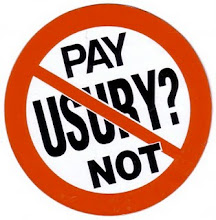What is a community currency and why would anybody want to use one?
By their design, community currencies force people to spend locally, and usually quickly. They often stand as pillars of community-led attempts to rejuvenate depressed economies, such as Totnes and Brixton Pounds in the UK’s Transition Towns, and Argentina’s wide adoption of the Crédito during its 1999 economic crisis. Most are managed by nonprofit organizations, who sell them in exchange for legal tender (one Canadian dollar buys one Calgary Dollar, for instance). The managing NPOs frequently have a surplus of funds (often from business participation fees or expired non-redeemed notes) that are funnelled into community projects or customer discounts. For example, 10 percent of all spent Toronto Dollars is donated to local charities, while the German chiemgauer, which started as a school project, has raised €100,000 for charities.
These schemes have roots in the traditional view of money having value because of actual goods or services already produced. For example, in the Middle Ages, a farmer exchanged a bag of wheat for a token, then used that token to purchase a bottle of ale; finally, the ale seller would take the token to the wheat depository to claim his amount. The token had only as much value as the wheat (meaning it lost value over time as rats, rain, and spoilage took their share of the food bags).
Today, national currencies still need to be tied to something tangible to have value. The modern centralized economic system uses debt as that value; i.e., the promise that someone will pay off a loan in the future. Banks lend out money based on demand, not on what supply they hold in stock. A bank creates money by crediting a customer’s account, on the promise that the customer will service the debt with interest payments and eventually the full balance. In this way, the value of our money is directly tied to our debt. If you can’t service the debt (as it happened during the US mortgage crisis), then the money has no value. If lucky, a government can step in to boost that up.
In a community currency, value comes from actual goods or services, such as the fruits sold by the local grocer, or the tech support to fix your laptop. If a community currency organization issues loans (and some do), these don’t exceed the amount of savings that members have put in. Because a community currency is based on real rather than expected value, the resultant economic system is much more stable, and smaller. Salt Spring Island, British Columbia, an idyllic coastal lake setting between Victoria and Vancouver, is home to one of the world’s most successful modern local currencies. Last year the 10,000-member community purchased $164,000 worth of Salt Spring Dollars, which are accepted by all banks and nearly all businesses in the area. Five percent of all transactions are donated to a charity selected by the customer.
A community currency system inherently shifts financial power away from the centre and toward smaller towns. National currency is made by a central bank, flows outward for a brief tour of the periphery, and always circulates back to the central source. A local currency, by being made in the periphery and used exclusively there, gets a lot more circulation in that community. This economic efficiency is especially valuable where jobs are scarce: rather than spending in big box stores where most of the money exits the local economy for remote corporate headquarters, every dollar of your community currency contributes to your neighbour’s income. To encourage faster spending (and even more circulation), some local currencies have expiry dates on bills, or negative interest rates.
Irrespective of these benefits, it is arduous for community currencies to gain traction, especially in metropolises where consumers are accustomed to endless choice, credit card convenience, and corporate loyalty programs. (Why use cash when my Visa card refunds me up to one percent of my transactions?) Recognizing the value of discounts, BerkShare dollars in the Berkshire region of Massachusetts offer a five percent rebate for users, a setup that led to tremendously fast growth: the region’s 100,000 residents grabbed up $1 million (US) worth of BerkShares in the currency’s foundational year, 2006. BerkShares come closest to the idea of community currencies functioning like customer loyalty programs, where the loyalty is to the town rather than to an external, corporate business. (Note the difference with something like Canadian Tire money, where the aim is not to revitalize a local economy but rather to entice spending at a specific big business chain — the existence of which, in some cases, is part of what’s depressing the local economy.) For all the practical negatives, most community currencies see themselves as complementary, rather than replacements, to existing national currencies. In a small community where corporate infiltration is weak — or, conversely, where a clone town has descended, sucking most of the town’s capital out to distant lands — community currency may prove to be the hidden spring within the town’s core." (snip) ...



1 Comments:
Good information on community currency. I learnt a lot.
Post a Comment
<< Home